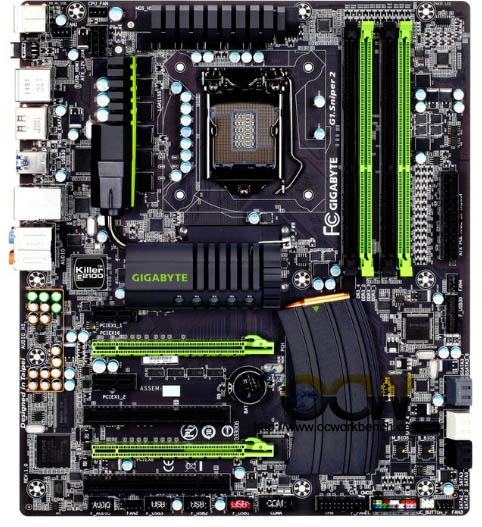Conclusion
Gigabyte G1 Sniper comes at a time when the market is flooded with Intel P67 boards. Although some may be surprised that instead of making it available on P67 platform, it is available on the Intel X58. Well, this is largely due to the expandability of the platform. With X58, it has more bandwidth to support 3 way SLI or CrossFireX.
If you notice, Gigabyte G1 Sniper is also quite different from other gaming solutions from ASUS. For example, they used the BigFoot Killer E2100 Gigabit Ethernet. With a dedicated 1GB of DDR2 memory directly onboard G1. Sniper for up to 10X faster networking performance; allowing gamer to move faster and shoot quicker. It also reduces CPU time to handle network traffic. Likewise, for audio, it uses the Creative’s SoundBlaster X-Fi Digital audio processor (20K2) with X-Fi Xtreme Fidelity and EAX AHD 5.0 technologies. Again, this differs from other designs using a CODEC and software X-Fi.
The board also uses the VLI as a HUB to make more USB 3.0 ports available on board. There is also a quick boost button allowing gamers to instantaneously overclock their system with the click of a button. While other brands of gamer board has Bluetooth remote control, Gigabyte G1 Sniper does not come with such feature which is meant for more for the overclocking crowd.
In terms of performance, the speed is quite similar to the ASUS Rampage III Gene or INTEL X58 solution. The slightly lower CPU Clk might have some minor impact on the speed though. Installation is pretty straighforward for this board. The on board LEDs also gives you a better indication of the status of the board. Unfortunately, there is no DEBUG LED.
Overclocking wise, the board is able to achieve 4GHz; overclocking the Intel Core i7 965 processor on Air. Below is a screen shot of it.
In conclusion, I think Gigabyte has got it right. They have listened to gamer’s needs and put the necessary hardware e.g. the Creative audio and the BigFoot network chipset on board. Currently, there are 3 models; 2 are ATX and the third is a XL-ATX. It would be nice to have the same specifications in a microATX form factor.
Pros
3 way CrossFire X and 3 Way SLI
Hardware audio using Creative sound chip
USB 3.0 hub
Cons
No graphical interface BIOS
No Debug LED
No Power Switch buttons
Ratings
Here are my ratings out of 10.
| Category | Score |
| Performance | 9 / 10 |
| Features | 10 / 10 |
| Ease Of Installation | 10 / 10 |
| Overclocking Features | 10 / 10 |
| Documentation | 9 / 10 |
| Packaging | 9 / 10 |
| Cost / Performance | 8 / 10 |
| Overall Rating : | 9.3 / 10 |





